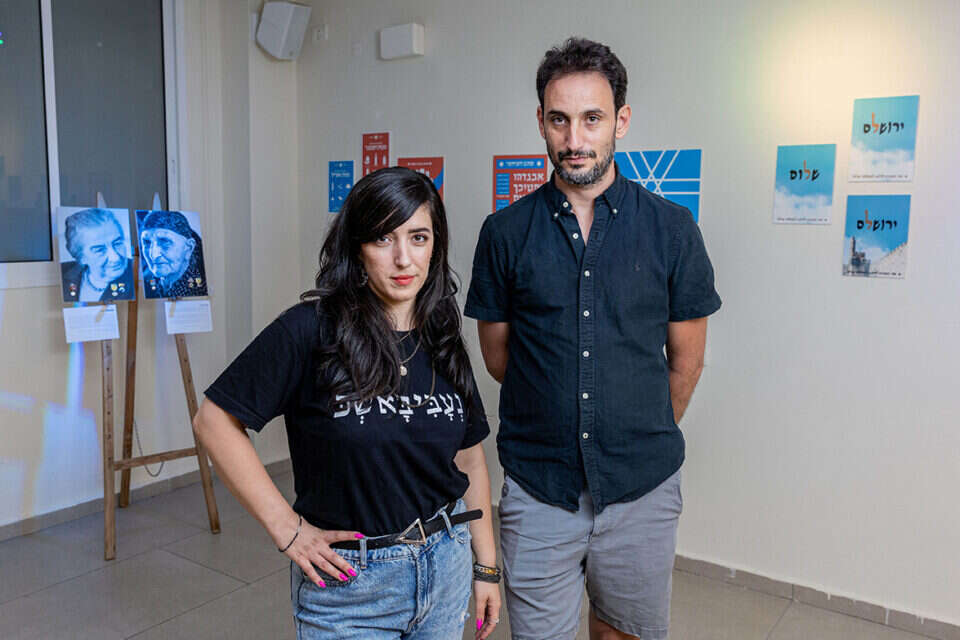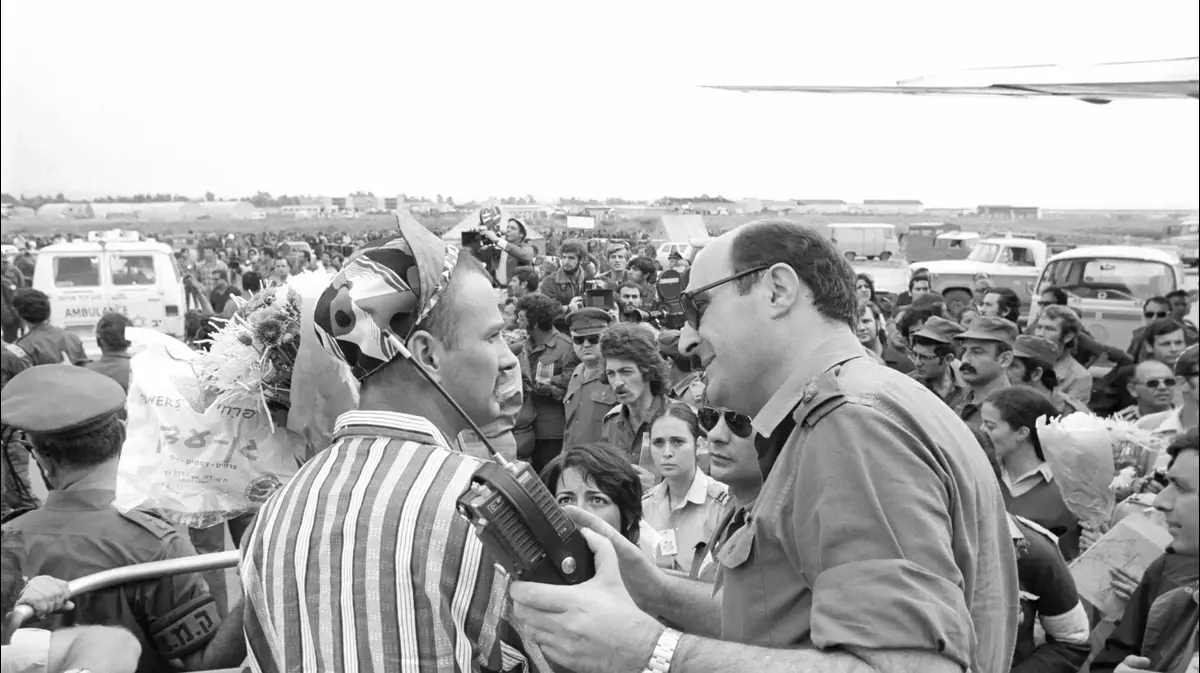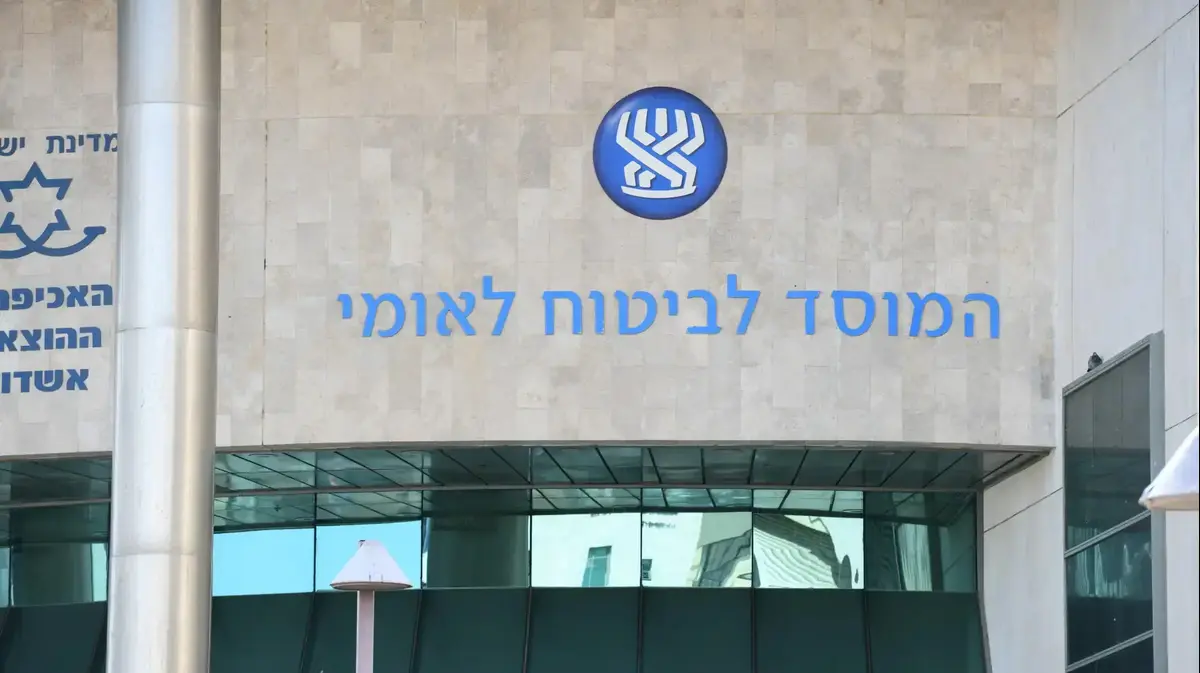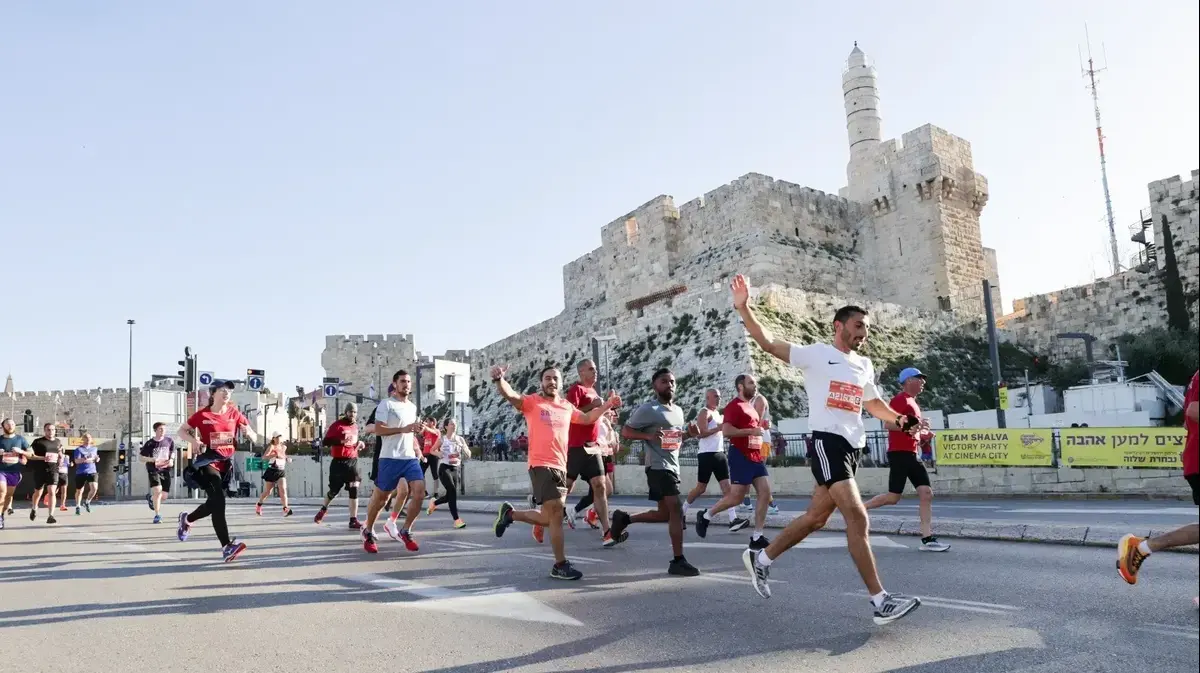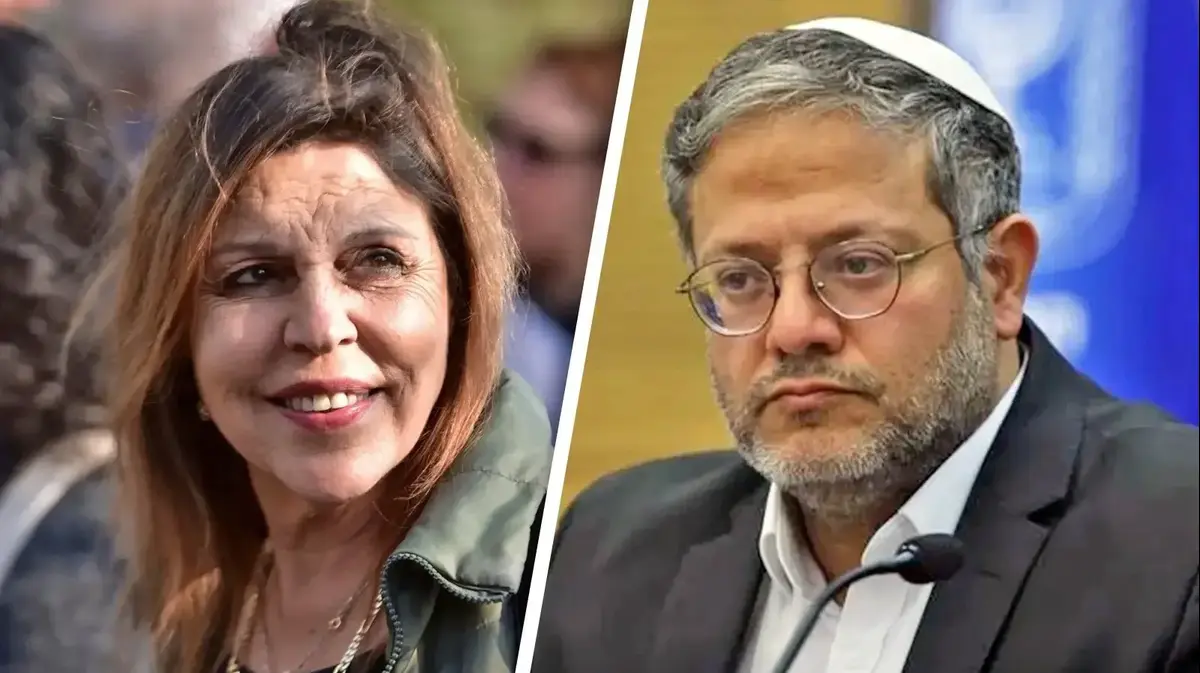What would have happened if the leading centers of power of the first aliyahs to Eretz Yisrael had been the Jews from Arab countries?
How would the anthem sound, for example?
On what scale was it composed?
Who was our national poet?
Would we dance parent?
What plays would have been staged at the Broom Theater, was there an affair with the Yemeni children, was there racism in the country and from what direction?
What were the streets called?
The cities?
What would have appeared on the bills?
What would happen if designers from the Eastern community were partners in shaping the Zionist ethos in its infancy?
What would the flag, the Declaration of Independence, the menorah look like?
Two young cultural entrepreneurs presented this question as a brief that ignited the imagination of ten artists, presenting in a new exhibition called "Traditional and Democratic", which after exhibiting in Yeruham and Tiberias, has recently reached the "Youth House and Radial 17" in the Hatikva neighborhood of Tel Aviv.
The exhibition is a collaboration between the Golden Age movement, founded by social activist Ofir Tobol in 2015, and the Bazaar, a platform that combines design and tradition, founded by Hadar Mamrod and her partner Haniel Almkeys. The two talk about the process that started the exhibition. : "This question intrigued us.
In general, in the bazaar we deal a lot with the design of the traditional, for example we had a project of designing portraits of the righteous, and another project of good years.
In preparation for this project, before we started creating, all the artists who work with us met in Neve Sha'anan, and took a tour of the old Central Station following the casting industry that operated there in the 1980s.
We also talked about how Zionism has shaped itself, and analyzed nostalgic posters from the beginning of Zionism.
We have seen that whoever appears on these posters is always bright, young and muscular, based on a rebellion in the old generation, as the international 'Old World Witnesses Destroyed' says.
In contrast, the Zionism of the Eastern community is not revolutionary but continuous,
Anat Perez placed photographs of Golda Meir and her grandmother side by side, with decorations of heroism hanging on each picture.
"If my grandmother lived in a different time, with a different education, she could run the country"
Previous
Next
1
2
3
4
5
6
"I miss tribalism"
Indeed, immigrants from Europe were disconnected from the suffocating exile of the shtetl.
It was a young movement whose members - most of whom were greatly influenced by the rising socialism of the turn of the last century - left everything behind, and built on the ruins of the old world a melting pot of muscle Judaism.
In contrast, the Zionism of Eastern Jewry is continuous.
It is not based on rebellion, but sees immigration as a record event, a catharsis of two thousand years of a dream.
Their Zionist world does not belong to the young, but to the whole family.
And really, unlike the muscular youngsters in the posters familiar to us, the show stars a lot of adults and even the elderly, and they are the center.
One of these works is Anat Perez's work, "Grandma's Salon": in the corner of the room are two pictures of older women in black and white of the same size: in one - Golda Meir, and in the other - Grandma Teranja (Etrog in Yemeni), Perez's grandmother For each picture, there are three medals of heroism designed by the artist.
There's a sentence in my family that claims my grandmother was such a strong and smart woman that she could have been Queen Elizabeth or Golda, and that's true.
If she lived in different circumstances, in a different period with a different education, she could run the country. "
You did not say "of another origin."
"Because it is irrelevant. It is clear that there is no different ability because of the testimony, but only in the perception of society. Even today there is some of it, we are still not ready for my grandmother or other Yemeni grandmothers to run the country," says Anat (47), married +4, lives in Mishmar Ayalon, artist.
Despite the gravity of things, they are said pleasantly, with a smile, in the hope that things will change.
Ophir Tobol: "According to the biblical model, the Mizrahi is a tribe and also the Ashkenazi, and each has its own uniqueness.
This is an opposite approach to that of the melting pot, which suited Ashkenazis who wanted to erase the exile.
The Mizrahis had no such motive "
The decorations created by Anat are very accurate: her grandmother gave her the "decoration of the aliyah" that looks a bit like a rug, a tribute to the magic carpet, and below it a reminder of the eagle of the Ethiopian aliyah.
She explains that some of the immigrants from the East are absent from the Zionist ethos, despite the idealism that motivated the immigrants and their great sacrifice along the way and in the country.
They are also absent from the history books, in which the bright beauties of the Blurit reign, even after the revolution Bennett made as Minister of Education.
The second decoration awarded to Tranja is the decoration of tradition, sheer in a style that combines Moroccan goldsmithing with Yemeni filigree, with the tablets of the covenant behind them the Declaration of Independence, as a combination of the people of Israel and the Torah of Israel.
The third decoration was duplicated and awarded to the two women to symbolize what they had in common.
This decoration looks like colored stripes of war symbols and below them the lamp.
Despite the war mention, there is no militant statement here.
"There is no denying that they came to a country saturated with wars. It is not an ideal, it is what it is."
Perez also gave meticulous decorations to the former prime minister.
At first the artist could not resist and stung: in this decoration appears the word "nice", which is, as I recall, part of how the Prime Minister summed up the meeting with the Black Panthers, and below it a decoration of a panther figure.
In the second, a coin bearing the figure of Grandma Teranja.
"Since the establishment of the state, no Oriental figure has appeared on any of the symbols of the government, except Maimonides who once appeared on a bill.
So I put my grandmother in order to fill that void. "
Anat, like many of the artists on display in the exhibition, did not feel blatant racism in her flesh, perhaps only in subtext, in a quiet undercurrent.
"At the age of three, we moved from Rosh HaAyin to Kedumim in Samaria. We left the Yemenite tribe for a seemingly all-Israeli place. In my life, no one told me 'you are black - go.' This culture because on the one hand I was not surrounded by it and on the other hand I did not receive it through the usual channels, not through music on the radio, not at school or on the movement.Only when I grew up did I really ask myself, wait, where did I come from? "Today I find that I miss a lot of this tribalism, this voice. But today I make up for it, my children get everything from home, learn not to be ashamed and know where they come from. Whoever knows where he comes from - knows where he is going."
Livnat Ben Hamo: "Ehud Banai and Berry Sakharof succeeded before they brought Judaism to the radio. But religious from home? With personal texts and not just those from the sources? It did not happen until Yishai Ribo and Hanan Ben Ari."
From left to right: "And you will look to me with hope", to Lee Greenwald, "To the Conductor", Yahel Gamliel and "Civic State" by Maor Tzafia,
Alternative Remembrance Day
"We remembered the two bosses that Grandma would knock on us before we left the house, blessing or lighting a candle before some significant event, and we wanted to incorporate those blessings in the state documents.
Stamps are displayed on the table and next to them are three documents that, in the opinion of the artists, should have been signed as well.
For example, to the peace treaty with Egypt, a stamp should have been added with the verse "Ask for peace and pursue it."
Ben-Gurion's letters were accompanied by a stamp with the blessing of the road to the Knesset of Israel, and another stamp for Kibbutz Galuyot.
The design of the stamps draws elements from Moroccan synagogues, in modern and clean lines.
'The attempt to write my history I sought to make by adding the missing parts, and not by deleting the existing ones.
Only in this way, in my opinion, can a real crucible be produced, one in which, before cooking, all the ingredients are added to it.
I invented a font I called 'half half', the lower half of which is traditional Ashkenazi letters, and the upper half Arabic calligraphy.
A kind of melting pot of letters, "explained designer Nevo Aran Lazar.
Samples from the new text hang on the wall, and next to them Nevo designed posters from the austerity period, inscribed in the above font, while the monthly food lists were converted to ones that are also suitable for the Mizrahi public.
Of course she did not forget in the list of the month of Nissan to add a bottle of bleach, because they clean for Passover and how can it be otherwise.
Next to the textual works, the artist presents an interpretation of the national flag, featuring the familiar Star of David after the artist extended his stripes to the limit of the page.
"That way there is a sense of something continuous, instead of being alone in the whole void," she explains and smiles.
One chilling work is that of Bat-El Ben-Horin.
The audience watching her watches quietly.
The light smile and wink that accompany a large part of the works in the exhibition - are erased, the stomach shrinks.
On the poster appears if a Yemenite is waving a baby silhouette.
"I tried to think about what reality would have looked like if there had been recognition of historical events, such as the affair of the children of Yemen, the East and the Balkans," Ben-Horin explains.
"I imagined a reality in which the State of Israel agrees to formulate a new, state-of-the-art narrative that admits mistakes and tries to produce real correction and healing. A reality in which past injustices are fully recognized by the establishment, and are formally and presently expressed."
The work of Ben Yifrach (37), a resident of Rehovot, a lecturer at Mentor College, who owns the Wilblum Design Studio, is an interpretation of the Declaration of Independence.
The artist did not change a word from the founding text, but only the way it is written: he received texts from Rabbi Yosef Mashash, one of the greatest rabbis of Morocco, and built from them a font with which he wrote the scroll.
"When we learned to write in school, we learned one type of pattern, but the Oriental way of writing was pushed to the margins," Yifrach explains.
Instead of the signatures, the menorah appears, but it also beckons to the Mizrahi, because it is drawn by the text of a Psalm, as it appears in the synagogues of the Mizrahi community. .
Yifrach was inspired by another work shown in the exhibition from the preliminary tour of Central Station.
He tried to imagine what would have happened if the reality had been the opposite, and the Mizrahi artists had a budget while the Ashkenazis had less.
He designed two records and two cassettes, but contrary to reality, this time the records are by Zohar Argov and Ahuva Ozeri, while the cassettes are by Arik Einstein and Hava Alberstein.
"A game is created here that both brings a smile and causes a shriek. In the end, in retrospect, there is some grace in the way recordings were distributed in the form of hacking, and we might not have signed such an emotional signature if they were not done that way, so all for good, but we were interested in playing The game. "
Bat-El Ben-Horin: "I imagined a reality in which Israel agrees to formulate a new, state-wide narrative, which admits mistakes and tries to produce a real correction. A reality in which past injustices are fully recognized by the establishment."
Has the healing process been complete?
Ophir Tobol, 37, a cultural entrepreneur, social activist, author and lecturer, is one of the people behind this exhibition and other projects aimed at promoting the heritage of North African and Middle Eastern Jewry and traditionalism in Israel. Which he defines as Zionist and Spanish. Those who named the infrastructure for Zionism as we know it today.
“My goal in life is to go from place to place and tell the story,” Tobol explains.
"As a teenager, I thought that Oriental culture was equal to primitiveness. It took a long time until I became proud of it. Here too, in this exhibition, I talk about how the Israeli story could have been the story of us all."
There is something divisive in this preoccupation. After all, the discourse and the ethnic demon have long since died out. Why upload it again?
"I do not think I will return to him for the split or for defiance," Yifrach replies.
"It's really a question of whether we're still there. I called my studio Wilblum because it's a translation of my last name, Yifrach. Wilblum - familiar. It will flourish less," he says and laughs.
"I myself play between East and West, between secular and traditional. One should occasionally stop and ask where we are, and if the healing process is complete. It is healthy observation, criticism is healthy."
So where are we?
"I would like to believe that we are in a better place. Occasionally the problems, difficulties, encounters come up in the headlines. This is the place to ask if the headlines are the main or the margins, if they characterize reality as a whole or the exception. I was born in 1984, Generation Y, so I'm on the border. I guess there were places where I was discriminated against. I'm afraid I was not hired for some jobs because I'm flourishing. You will not have to suffer for it to bloom. "
Tobol insists that in this exhibition, as in many of the things he deals with, there is no separating and agitating element but the opposite, "we are agents of union and love" he says with a smile.
"Whoever wants to make us one and create unity among all parts of the people is the one who creates the greatest division. But when we go to the biblical model of the tribes of Israel, that the Mizrahi is a tribe and the Ashkenazi is a tribe, and each has its own uniqueness, its contribution to the whole - we promote squad.
This is an opposite approach to that of the melting pot, which suited Ashkenazis who wanted to erase what they had in exile.
The Mizrahis had no such motive. "
Yifrach says that his father grew up in Dimona.
"At the age of 13, his sister took him to Kibbutz Bari and told him: 'If you do not leave Dimona, nothing will come out of you' and made sure that he was absorbed there, in the kibbutz. And looks like the lead singer of a rock band.My dad passed away as the vice president of the Allenby Pass who earned very nicely.
He probably would not have made such a profit if he had stayed in Dimona.
But something from Dimona remained in him, which is the synagogue, the holidays and the traditions, and he passed these on, to us, his children.
This tradition has always been there and will always be a part of me, even though I am completely secular. "
From the studio to Galgalatz
The exhibition is not just about visual art.
After a tour of it and explanations from the artists, the guests climbed to the roof of the building, and in front of the city lights they heard Livnat Ben Hamo, a musician, singer and broadcaster at the GLC, performing her songs and telling the story of contemporary Israeli music. By herself, when she went to auditions for "Kochav Nolad" when she was still a studio girl from Ashdod. "There was no problem with women singing in my house.
In many Moroccan homes this was commonplace, and even my grandfather, who dressed as an ultra-Orthodox, would come to my shows and applaud.
"When the audition aired, they summoned my father to the principal's room and threatened to kick me out of the studio if I did not sign a document that I would not make music until I was 18. I lied and signed, but at every show I prayed there would be no teacher from the studio."
She testifies that as a child, she would not listen to the station where she served because she felt alienated from the selected playlist.
Later, when you will be part of the playlist committee that selects the songs that will be broadcast on the most popular station in the country, you will feel a mission to open the ranks of the Israeli mainstream, and add to our soundtrack the absent voice, the Oriental and the religious.
The motive for this is somewhat similar to Tobol's idea of tribal theory.
His brother-in-law claims that by opening the ranks and including more streams, more groups in the nation can be connected to this place so that they can see a home in it, and that is what will make them want to be a part.
Speaking of the moderates of this artificial mainstream, she has a long list that includes not only Eastern Jewry, but the entire geographical-cultural-political-religious-periphery.
She is optimistic.
In her analysis, the entry of religious artists into the Israeli soundtrack is a dizzying success.
"While we are here, Hanan Ben-Ari closes for the fourth evening in a row in Caesarea and not for the first time. True, it took time and effort, but that's what happens. Ehud Banai, Etty Ankry, Shuli Rand and Berry Sakharof. But all these are beloved artists who succeeded before they brought Judaism to the radio. But religious from home? With personal texts and not just those from the sources? "Behind the scenes, when it happened. It's not just me, it's a variety of social trends that have allowed and allowed this music to be heard. But you have to knock on the table and raise your voice and fight, so it's very important to have a variety of people in influential bodies."
His brother-in-law says that even after the break-in, there were editors who tried to compile the plays of Ben-Ari and Ribo.
"There were people in whose eyes it was impossible to have two people with a dome in the parade."
Despite the optimism, she knows the revolution is not complete.
"The Mizrahis are entering the playlist in a very poppy section and not as an Eastern hardcore. There's another way to do it, but we're going for it."
Were we wrong?
Fixed!
If you found an error in the article, we would love for you to share it with us

